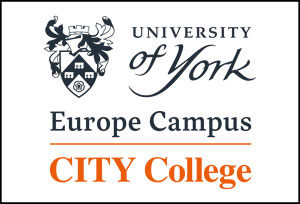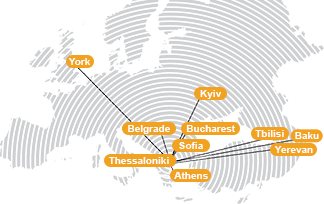CONTEXT
Infrastructure is the backbone of sustainable development and forms much of the foundation for quality of life. However, it consumes vast material resources and energy. Hence, educating todays’ prospective engineers, who will design, construct, and maintain these systems for the next 50 or more years; with the awareness and knowledge of sustainable infrastructure design is critical in achieving a sustainable quality of life for generations to come.
Civil engineering covers a wide range of disciplines that incorporates infrastructures: construction, environmental, geotechnical, water resources, structural and transportation engineering. Therefore, it is imperative civil engineering undergraduate students get accustomed to concepts and principles needed to meet the requirements of sustainability in complex civil engineering projects. The curricula of civil engineering undergraduate programs in Europe focus mainly on safety, regulations, standards, codes, and security of infrastructure systems and lack societal and environmental impacts, sustainability, resilience concepts in the various stages of the design process.
As a response, this project will develop an undergraduate civil engineering curriculum that covers sustainable infrastructure design to ensure graduates have the ability to apply concepts and principles of sustainability to the solution of complex civil engineering projects. In order to achieve this objective, SUSTAIN-CE will lead to and test innovative curricula in Turkey, Greece, Portugal and Spain by blending context-specific driven skill gap mitigation with globally benchmarked practices in true co-creation with industry, industry associations, policy makers, end-users and academia. This will be further multiplied and sustained through a digital and fully open platform towards boosting open learning in the above mentioned context.
GOAL
SUSTAIN-CE Project will attempt to enrich the contemporary civil engineering undergraduate programs’ curricula by incorporating sustainability, resilience and circular economy concepts in various stages of the design courses.
ACTIVITIES OVERVIEW
- Identifying 24 best practices of cutting edge open innovation based quadruple helix co-creation mechanisms
- Development of a quadruple helix co-creation methodology
- Conducting three skills matrix surveys in each country to identify the skills gap between the quadruple helix stakeholders’ needs and employee skills related to SD/CE.
- Identifying 60 best practices of civil engineering curricula/programs from top universities
- Establishing 3 focus Groups
- Identifying a list of the specific areas/thematics in the main-curriculum areas for intervention
- Development of a blueprint for the design of the curriculum
- Development of a list of SD/CE themes, which will be incorporated into the design courses’ contents, for each of the selected thematics
- Development of the SD/CE contents that will be integrated into the existing courses in each thematic area in Civil Engineering resulting in the newly designed curriculum
- Development of the syllabus and contents of a new course supporting the SD/CE concepts in civil engineering
- Organization of one Trainers’ Labs where partners will homogenize the training needs analysis as well as develop an initial strategy for the Training Academies
- Development of a virtual learning environment (VLE) in a blended manner
- Implementation of three Training Academies Greece, Portugal, and Turkey
- Development of a short guideline for other educational institutions willing to implement SUSTAIN-CE Training Academies
- Dissemination activities through the organization of three multiplier events for communicating the project’s results
1. Results expected from O1:
- 3 stakeholder lists will be created; one for each country.
- 24 best practices of cutting edge open innovation based quadruple helix co-creation mechanisms will be identified.
- A quadruple helix co-creation methodology will be developed for the involved countries.
- Three skills matrix survey in each country to identify the skills gap between the quadruple helix stakeholders' needs and employee skills related to SD/CE. A number of 40 responses per country are planned (120 responses in total).
- A benchmark study investigating SD/CE in civil engineering curricula/programs from top universities, in order to understand what trends and concepts are being offered by the leaders in this field. Each partner will research at least 10 best practices on a global or national level (60 best practices in total).
- 3 focus groups will be formed by the partners (one per country) to elaborate on the results of the skills matrix surveys, by using the co-creation methodology.
Number of targeted participants in each focus group organized in each country:
From participating and non-participating HEIs and VET centres: 6
From industry: 4
From government: 3
From society: 3
- A list of the specific areas/thematics in the main-curriculum areas for intervention (based on the skills gap analysis and benchmarking results).
2. Results expected from O2:
- A list of SD/CE themes, which will be incorporated to the design courses’ contents, will be generated for each of the selected thematics.
- The SD/CE contents that will be integrated to the existing courses in each thematic area in Civil Engineering resulting into the new designed curriculum.
- The syllabus and contents of a new course supporting the SD/CE concepts in civil engineering.
3. Results expected from O3:
- Guidelines and the methodology for the implementation of the Training Academies.
- Training materials and tools supporting the implementation of the Academies.
- Three Academies implemented in Portugal, Greece, Turkey.
- Three evaluation reports summarizing the results of the three Training Academies, for reengineering O2 and O3 outputs.
- A short guideline for other educational institutions willing to implement SUSTAIN-CE Training Academies.
4. Results expected from O4:
- One VLE platform (design, develop and content).
- Online community via the discussion forum tool integrated in the VLE.
5. Results expected from O5:
- 1 Guidelines for systemic transformation of universities towards SD/CE, content adaptation, co-creation, digital transformation, etc.
- 4 Policy briefings and 1 recommendation paper.
6. Project social media accounts: Facebook, LinkedIn, Twitter.
7. Training Activities (C):
C1: Train the Trainers Lab (3 days in Thessaloniki, Greece) (supporting O1 and O2) (Month 9)
C2: Training Academy 1 (3 days in Lisbon, Portugal) (Month 15)
C3: Training Academy 2 (3 days in Thessaloniki, Greece) (Month 20)
C4: Training Academy 3 (3 days in Izmir, Turkey) (Month 25)
8. Multiplier Events (E)
E1 – 1st multiplier event (Thessaloniki, GR) (Month 9) - after C1
E2 – 2nd multiplier event (Lisbon, PT) (Month 15) - after C2
E3 – 3rd multiplier event (Thessaloniki, GR) (Month 20) - after C3
E4 – 4th multiplier event (Izmir, TR) (Month 25) - after C4
E5 – 5th multiplier event in the form of a Final Conference (Izmir, TR) (Month 32)
9. Transnational Project Meetings (TPM)
TPM1: Kick-off meeting, Izmir, TR (Month 1)
VIRT1: Virtual over skype (Month 5)
TPM2: Thessaloniki, GR (Month 9)
VIRT2: Virtual over skype (Month 12)
TPM3: Lisbon, PT (Month 15)
TPM4: Thessaloniki, GR (Month 20)
TPM5: Izmir, TR (Month 25)
TPM6: Izmir, TR (Month 32)
Intangible Results
1. Undergraduate engineering students, recent engineering graduates, professionals and employees of government and non-governmental organizations will improve their:
- practical skills on SD/CE applications on civil engineering projects
- awareness on sustainability and circular economy
- confidence and motivation to work on SD/CE related engineering projects
2. Partners’ staff will improve their:
- knowledge on SD/CE concepts in the design and construction of civil engineering projects
- international know-how in the field of the project
- skills for co-creation works
- digital skills in using the VLE
3. Other stakeholders (such as HEIs, VET centres, etc.) will improve their:
- knowledge as to the methodological aspects of developing a civil engineering curriculum integrated with SD/CE concepts
- awareness about SD/CE applications in civil engineering projects






